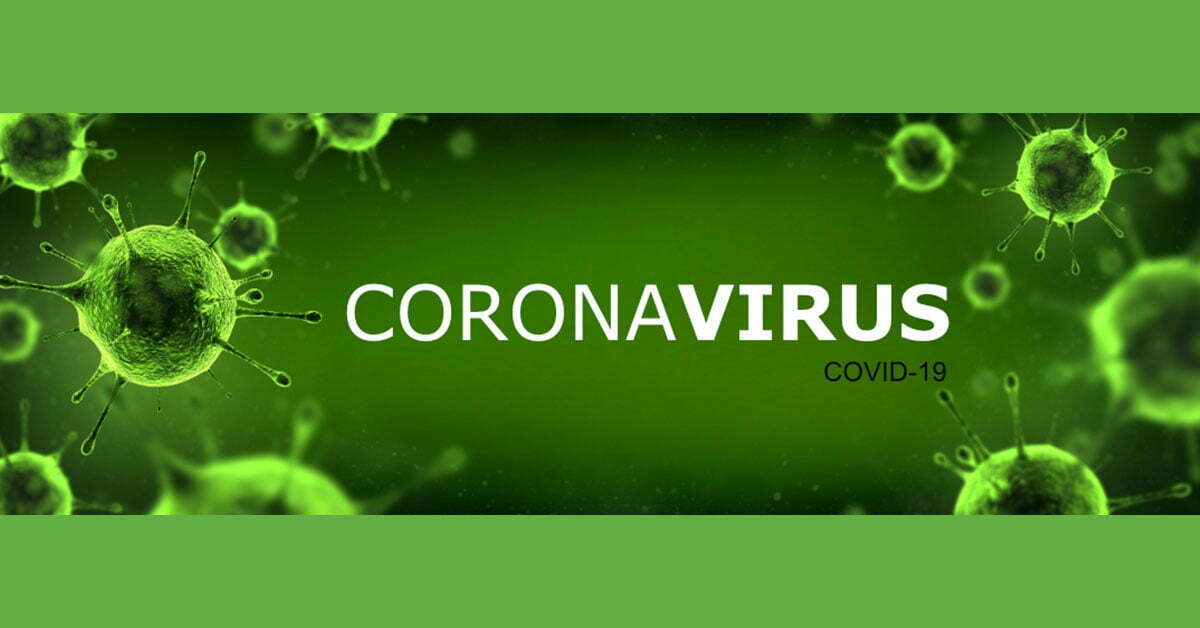
05 Aug Coronavirus in Wastewater and Biosolids
2020 – By: Kelly Ward, Technical Project Assistant (Co-Op Student)
On March 11th, 2020 the World Health Organization (WHO) declared COVID-19 a global pandemic and instructed countries to take urgent and aggressive action against its development1. COVID-19 is a respiratory illness of varying severity, caused by the SARS-CoV-2 coronavirus. Human pathogenic viruses, such as coronaviruses, enter the atmosphere through feces, urine, and bodily secretions including saliva, blood, and sweat2. The virus is most commonly transmitted when an infected person releases liquid droplets into the air while coughing and sneezing in the vicinity of another person.
As transmission of the virus can occur through bodily fluids, it is important to understand the impact of wastewater treatment on the virus, its transmission and infectivity. Since the COVID-19 coronavirus is novel, there was no existing research in this area when the pandemic began. However, there was already a significant body of research on the effect of wastewater treatment on similar viruses in wastewater. Survival in water and wastewater environments is dependent on various virus properties, including the stability of the virus in its surroundings and the characteristics of the lipid envelope that encloses the cell. The infectivity of the virus is affected by environmental factors such as ambient temperature, relative humidity, light or UV exposure, and the type of media it inhabits2.
There is currently no evidence that the COVID-19 coronavirus can remain infective after undergoing the disinfection processes used for drinking water and wastewater treatment3. Wastewater disinfection processes such as UV eradication, chlorination, and oxidation with peracetic acid are all effective in protecting public health because they are responsible for damaging the lipid envelope of the virus cell so that it loses the ability to infect other cells. Coronaviruses actually appear to be more easily eliminated by disinfectants in the treatment process when compared to bacteria, such as E. coli, which is an indicator organism that is monitored frequently for consumer safety. A 2009 study on the survival of coronaviruses in waste and wastewater found that coronaviruses die off very rapidly in wastewater with a 99.9% reduction rate in 2-3 days4.
There are now efforts underway by researchers across the world to use wastewater as a surveillance method for COVID-19 prevalence and outbreaks in communities. Wastewater surveillance has been used to track drug use and outbreaks of other diseases across communities. It can be a low-cost and accurate method for tracking these types of incidences, without compromising individual confidentiality.
While wastewater tracing of coronavirus is still just getting started in many places, it has already proved valuable in providing information that may otherwise not have been revealed. A recent study of multiple communities in Massachusetts found the estimated number of infected individuals from wastewater RNA testing was larger than the number of reported cases in the community5. This discrepancy could be explained by the fact that not all individuals who carry the virus become ill and display symptoms. Researchers in Canada are working on a national working group to standardize methods and sharing knowledge in this area,6.
You may also be wondering about biosolids, the other product of wastewater treatment besides clean water. Wastewater biosolids must also undergo some level of treatment to reduce pathogens before they can be land applied. The treatment processes which reduce pathogenic bacteria to acceptable levels are also effective in eliminating enveloped viruses2. Advanced biosolids treatment processes such as Lystek THP eliminate pathogens by a combination of steam heat injection (to 70oC), alkali addition, and physical shearing.
To protect our workforce, subcontractors, and customers during the COVID-19 pandemic, we have implemented additional protocols, as recommended by local health units and Health Canada. The wastewater sector is always diligent about providing personal protective equipment (PPE) and promoting proper hygiene habits to protect against pathogens that are common to wastewater. In addition, Lystek has implemented social distancing measures, increased hand hygiene, and frequent sanitization of commonly touched surfaces to protect its employees.
Remember to wash your hands frequently and social distance!
References
1. WHO Director-General’s Opening Remarks at the Media Briefing on COVID-19. March 11, 2020. [https://www.who.int/dg/speeches/detail/who-director-general-s-opening-remarks-at-the-media-briefing-on-covid-19—11-march-2020]
2. Maal-Bared, R., Munakata, N., Bibby, K., Brisolara, K., Gerba, C., Sobsey, M., Schaefer, S., Swift, J., Gary, L., Sherchan, S., Babatola, A., Olabode, L., Reimers, R., Bastian, R. and Rubin, A. May 12, 2020. Coronavirus and Water Systems. [https://www.wef.org/news-hub/wef-news/coronavirus-and-water-systems/]
3. Maal-Bared, R. March 26, 2020. What We Know About Coronavirus and Water Treatment. [https://wef.org/wef-waterblog/wef-waterblog/what-we-know-about-coronavirus-and-water-treatment/]
4. Gundy, P.M., Gerba, C.P., Pepper, I.L. (2009). Survival of coronaviruses in water and wastewater. Food and Environmental Virology, 1(1),10. [https://www.ncbi.nlm.nih.gov/pmc/articles/PMC7091381/]
5. Wu, F., Xiao, A., Zhiang, J., Gu, X., Lee, W.L., Kauffman, K., Hanage, W., Matus, M., Ghaeli, N., Endo, N., Duvallet, C., Moniz, K., Erickson, T. Chai, P., Thompson, J., Alm, E. (2020). SARS-CoV-2 titers in wastewater are higher than expected from clinically confirmed cases. medRxiv. doi: 10.1101/2020.04.05.20051540 [https://www.medrxiv.org/content/10.1101/2020.04.05.20051540v1.full.pdf]
6. UBC Civil Engineering Professor Ryan Ziels to Develop Wastewater Testing for COVID-19. July 7. 2020. [https://www.civil.ubc.ca/news-events/2020/07/ubc-civil-engineering-professor-ryan-ziels-develop-wastewater-testing-covid-19].